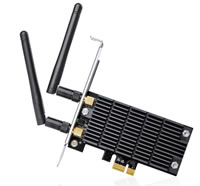
Wireless networking has come a long way from over the past 10 years or so.
It has gone from a patchy and unreliable technology to a staple of most homes and businesses, something that is relied on daily by a lot of people and one of those things that is just expected to work.
Even though it is now a highly reliable and heavily used connection method, the tech is ever evolving and with the increasing speed of home and business Internet connections combined with more demanding apps and software, ensuring that your network connection is running at its fastest speed is more important than it ever has been.
Why Is Your Wireless Network Speed Now More Important?
For years most homes and businesses got their Internet via a standard broadband service, speeds of around 3 – 7MB/s (megabytes per second) were typical.
If you then had a standard router setup this would generally connect to your devices at speeds of around 7MB/s, not amazingly fast but crucially it was faster than your Internet connection, so it was fast enough for most people’s needs.
Over the past few years though services like fibre optic have become more widespread. A decent fibre optic Internet speed would be between 40 – 70 MB/s and the top packages offer 100 MB/s + speeds, fibre optic really is a massive step up over standard broadband.
The problem is that your Internet might be arriving at your home at say 70Mb/s but if your wifi will only run at 7MB/s then you are losing most of the performance that you’re paying for.
To deal with this many fibre optic Internet connections come with a new router which is capable of operating at much higher speeds, these are usually badged as Wireless AC routers and they come in various speeds.
That’s all well and good, but to create a fast wireless connection both ends of the connection need to be able to operate at this higher speed. A Wireless AC router connected to a slower wireless network card will only run as fast as the slowest device can manage.
So, to ensure that you are achieving the best possible connection you need to check what speeds your devices can run at.
A (Very) Brief Guide To Wireless Network Protocols & Speeds
Wireless equipment such as routers and network cards are always rated at a certain speed with a protocol version.
(A protocol is the instructions and language used by the device to communicate with other devices, for our purposes just think of it as a name).
Wireless speed ratings can be a source of confusion, the reason for this is that they are always rated at how many ‘bits’ of data they can transfer in a second, so a 300Mbps would be a common speed rating.
It means that the card can transmit 300 Megabits every second (a megabit is 1,000,000 bits, a bit is literally a bit of information i.e. a 1 or a 0).
The confusion comes in two areas. Firstly, 300Mbps is often confused with 300MB/s (megabytes per second), a bit and a byte are two vastly different units of measurement. Anyone making this mistake would assume that a 300Mbps connection could download a 600MB (megabyte) file in 2 seconds.
When you do the conversion though a 300Mbps connection would work out to just 37.5 MB/s, so the 600MB file would take 16 seconds to download, 8 x slower.
Therefore, if you have a 100MB/s fibre optic line coming into your property and your router / computer are connected via a 300Mbps connection then your Internet speed is instantly slowed down to just over a third (37.5 MB/s) of what it could potentially be.
The second part of the confusion is that the speed ratings are the very maximum you could expect in perfect conditions. In reality, put a wall or a floor in the way and the signal strength / quality will drop off and leave you with quite a bit less than the maximum operating speed.
Common Wifi Protocols & Speeds
Wireless B – 11Mbps ~ 1.375MB/s
Wireless G – 54Mbps ~ 6.75MB/s
Wireless N – 300Mbps ~ 37.5MB/s
Wireless AC* – 867Mbps ~ 108MB/s
*Wireless AC is the latest and fastest protocol and has a few different speed ratings, you need to check your equipment to identify exactly what speed various equipment will run at. It can also run over two different radio frequencies simultaneously so something might be listed as Wireless AC 1300Mbps but it probably means it can run over one frequency at 867Mbps and the other at 400Mbps simultaneously.
Real World Considerations & Thoughts
Now that you have a better understanding (hopefully) of wireless technologies and speeds, how can we decide what is the best way forward for your own setup?
Basically the best practice is as follows:
If you have a fibre optic connection then you should go for a Wireless AC router and network card for your PC, this will ensure a fast connection and shouldn’t bottleneck your network speeds.
If you run a standard broadband package then Wireless N is fine for your needs, it is generally cheaper and is supported by more devices than the AC protocol.
All Wireless AC cards are capable of running at lower speeds, cross compatibility is pretty good, so if you think you might upgrade to fibre optic at a later stage then it may be worth going for a Wireless AC card now in preparation for an Internet speed boost at a later stage.
All of our computers come with the option of a Wireless N or a Wireless AC networking card.
I hope that was useful for you.
Written by Darren @ Multiple Monitors
Last Updated: May, 2016